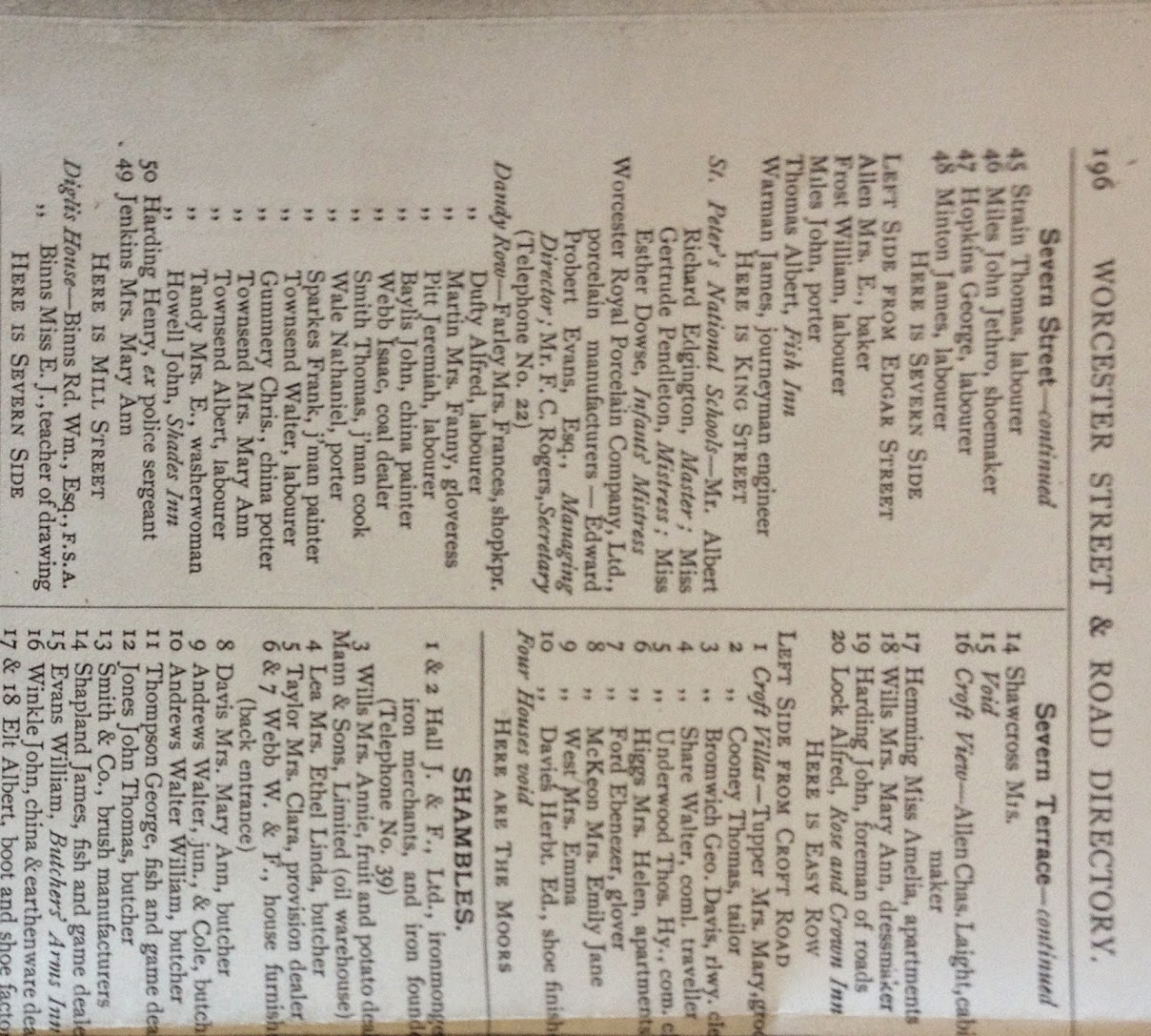Explore Your Archive. Dandy Row: It all started with a photograph
- 10th November 2014
While sorting through a small collection I came across a photograph taken from Worcester Cathedral looking across the Worcester Porcelain works and surrounding area. It showed Worcester when the Bath Road took you to open Countryside.
With thanks to Mr Gwillam for use of this photograph
We were intrigued by the photograph and began trying to work out what the streets were. We knew the date of the photograph was c. 1900, so we started by looking at an ordnance survey map of the area to try and get our bearings. The area we are looking at is the parish of St Martins. The next step was to find out the names of the streets in the photograph. We did this by searching local trade directories around 1900, copies for 1898 and 1900 gave us lists of the local streets. This led us to discover Dandy Row which captured our imagination.
Worcestershire Archive and Archaeology Service reference library. Littlebury’s Directory 1900, Ref: 900.1900
Jeremiah Pitt, Albert Dufty, Nathaniel Wale and Mrs Tandy would seem at first glance to be characters from a Dickensian Novel. Their names may indeed come from the 19th century, but they were all actual residents of Worcester and they lived in this small terrace of houses called Dandy Row. This small row of houses has been lost in the mists of time, but by delving into the archives the row and its inhabitants have been brought to life.
Over the next few days we will share with you what we have discovered and introduce you to some of the residents of Dandy Row.
By Angela Downton
.jpg)
.jpg)